Scabies;
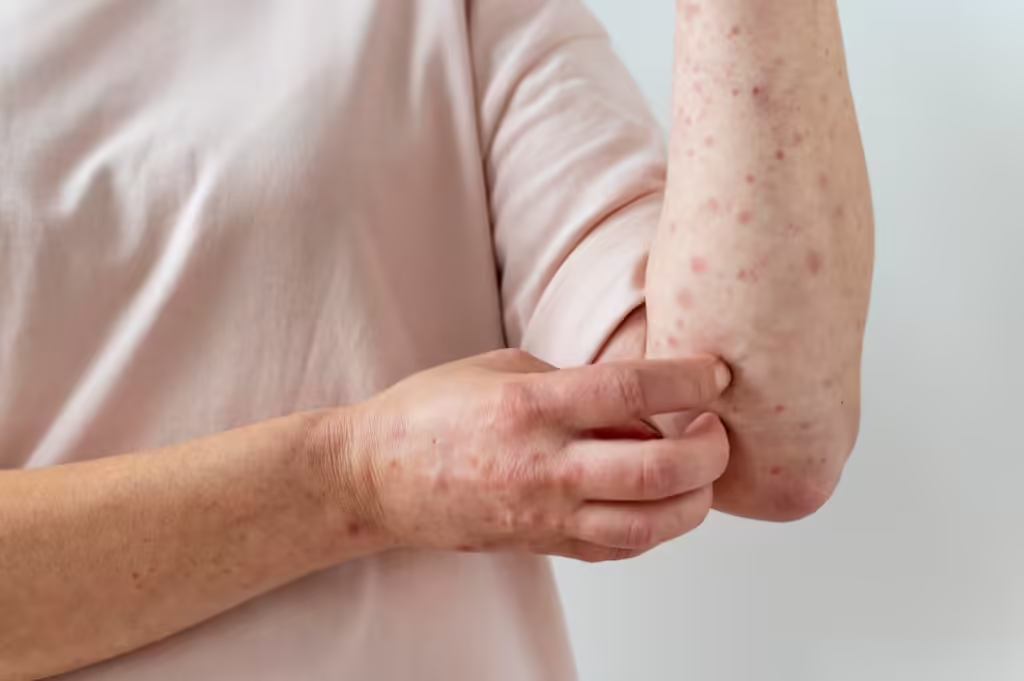
Overview
Scabies, a highly contagious skin infestation caused by the Sarcoptes scabiei mite, is a significant global health concern. Its prevalence is particularly high in warm climates and crowded living conditions.
What is Scabies?
Scabies occurs when the Sarcoptes scabiei mite burrows into the skin, triggering an allergic reaction and intense itching.
Transmission:
Direct skin-to-skin contact is the primary mode of transmission, but sharing bedding and clothing can also facilitate the spread.
Causes:
Primary Cause:
Infestation with the Sarcoptes scabiei mite, which burrows into the skin to lay eggs.
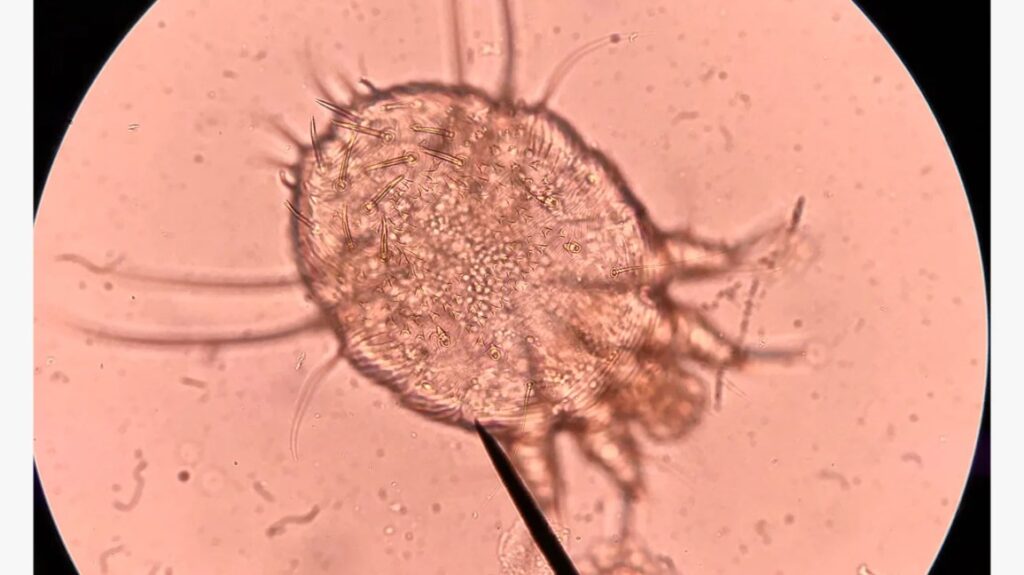
Contributing Factors:
- Close personal contact with an infected individual.
- Overcrowded living conditions.
- Poor hygiene practices.
Scabies Symptoms:
1. Itching (Pruritus):
- Intense itching, especially at night, is the hallmark symptom of scabies.
- Itching can occur anywhere on the body but is commonly found in skin folds, between fingers, wrists, elbows, knees, and genitalia.
2. Skin Rash:
- A red, bumpy rash may develop, often with small, raised, and irregular lines.
- The rash can appear in various parts of the body, including the hands, wrists, elbows, armpits, waist, buttocks, genitalia, and between the fingers and toes.
3. Lesions and Blisters:
- Scratching the affected areas can lead to the formation of lesions, blisters, or open sores.
- Secondary bacterial infections may occur due to scratching, leading to pus-filled blisters or crusted sores.
4. Mite Burrows:
- In some cases, thin, irregular, thread-like burrows may be visible on the skin surface.
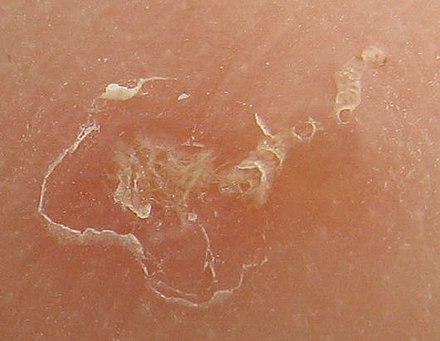
- These burrows are created by the female scabies mite as it tunnels under the skin to lay eggs.
5. Inflammation and Irritation:
- The affected skin may appear inflamed, reddened, or irritated due to scratching and the body’s immune response to the mites and their waste products.
6. Worsening Symptoms at Night:
- Itching and discomfort often worsen during the night, disrupting sleep and causing significant distress to affected individuals.
7. Spread to Family Members or Close Contacts:
- Scabies can easily spread to family members, sexual partners, or individuals living in close proximity due to prolonged skin-to-skin contact.
8. Symptoms in Specific Populations:
- In infants and young children, scabies may manifest as small, pimple-like eruptions on the palms, soles of the feet, and around the face and scalp.
- In individuals with weakened immune systems, such as those with HIV/AIDS or undergoing chemotherapy, scabies symptoms may be more severe and persistent.
Scabies Rash
Description:
The scabies rash appears as red, pimple-like bumps or blisters, often clustered together and accompanied by severe itching.
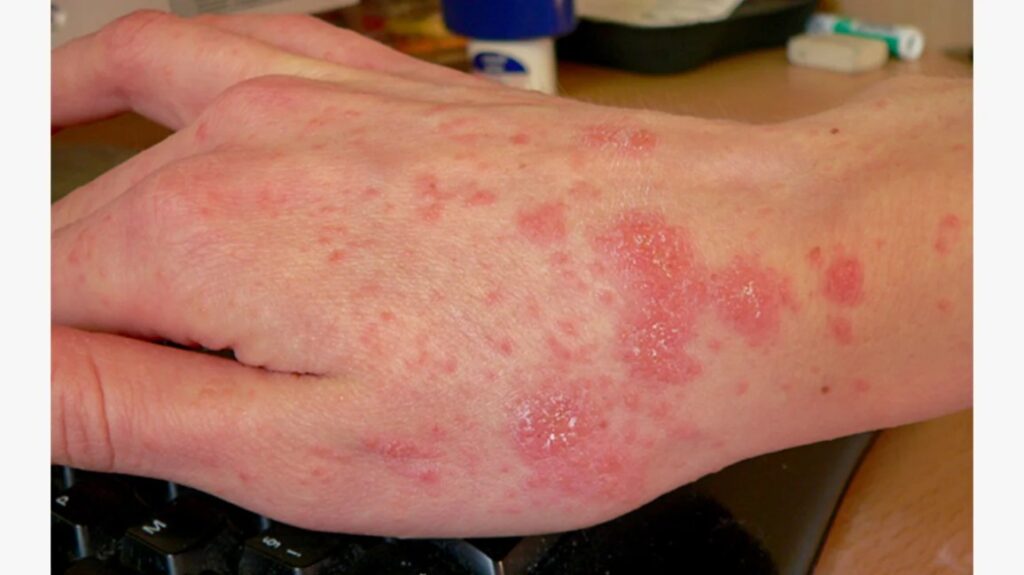
Types of Scabies:
1. Classic Scabies (Sarcoptes scabiei var. hominis):
- Classic scabies is the most common form of the infestation caused by the human itch mite, Sarcoptes scabiei var. hominis.
- It typically manifests with the characteristic symptoms of intense itching, rash, and burrows on the skin.
2. Norwegian Scabies (Crusted Scabies):
- Norwegian scabies is a severe and highly contagious form of scabies.
- It is characterized by the presence of thick, crusted, scaly lesions on the skin, which contain a massive number of mites.
- Individuals with weakened immune systems, such as those with HIV/AIDS or certain neurological conditions, are more prone to developing Norwegian scabies.
3. Nodular Scabies:
- Nodular scabies is a less common variant characterized by the formation of itchy nodules or papules under the skin.
- These nodules are often found on the trunk, buttocks, genitalia, and lower limbs.
- Nodular scabies may occur in individuals with repeated or inadequately treated scabies infestations.
4. Crusted Scabies (Hyperkeratotic Scabies):
- Crusted scabies, also known as hyperkeratotic scabies, is a subtype of Norwegian scabies.
- It is characterized by thick, grayish-white, hyperkeratotic crusts covering large areas of the body, including the hands, feet, elbows, and scalp.
- Crusted scabies is highly contagious and may require aggressive treatment approaches due to the large number of mites present.
5. Scabies in Infants and Children:
- Scabies in infants and young children may present with slightly different symptoms compared to adults.
- In infants, scabies may manifest as small, pimple-like eruptions on the palms, soles of the feet, and around the face and scalp.
- Children may also experience intense itching and rash, particularly in skin folds and between fingers and toes.
Risk Factors:
1. Close Contact with Infected Individuals:
- Living in crowded conditions.
- Sharing bedding, towels, or clothing with someone who has scabies.
2. Age and Gender:
- Children and the elderly are at higher risk due to weaker immune systems.
- Scabies is slightly more common in females compared to males.
3. Health Conditions:
- Weakened immune system due to conditions like HIV/AIDS or undergoing chemotherapy.
- Neurological conditions that impair sensation or mobility, leading to less frequent washing or detection of scabies.
4. Occupation:
- Healthcare workers, daycare workers, and teachers may be at increased risk due to close contact with individuals who have scabies.
5. Living Conditions:
- Lack of access to hygiene facilities or inability to maintain personal hygiene increases the risk.
- Overcrowded living conditions, such as refugee camps or prisons, promote the spread of scabies.
6. Sexual Activity:
- Engaging in unprotected sexual activity increases the risk of contracting scabies, especially in genital areas.
7. History of Scabies:
- Individuals who have had scabies in the past are at a higher risk of reinfection.
8. Travel to Endemic Areas:
- Traveling to regions where scabies is more prevalent increases the likelihood of exposure.
9. Skin-to-Skin Contact:
- Close contact with an infected individual, such as hugging or sexual activity, increases the risk of transmission.
10. Poor Socioeconomic Status:
- Limited access to healthcare and inadequate living conditions contribute to the risk of scabies transmission and persistence.
Scabies Treatment :
Effective treatment of scabies involves targeting both the mites and their eggs. Medications prescribed by a dermatologist are essential for eradication and preventing reinfestation.
How do dermatologists diagnose scabies?
Dermatologists can diagnose scabies through visual examination of the skin and microscopic inspection of skin samples.
- Visual Examination: Dermatologists inspect the skin from head to toe for characteristic signs of scabies, such as burrow tracks and rash.
- Microscopic Examination: Skin samples are taken and examined under a microscope for the presence of scabies mites or their eggs, confirming the diagnosis.
How do dermatologists treat scabies?
Treatment is crucial for all individuals diagnosed with scabies and those who have had close contact with them, regardless of symptoms.
- Medication: Prescription medications, such as permethrin cream, crotamiton cream, or benzyl benzoate lotion, are commonly prescribed to eradicate mites.
- Application: Medication is applied to all skin from the neck down, with infants and young children requiring additional treatment for the scalp and face.
• Drug Treatment:
- Permethrin Cream (5%)
- Crotamiton Cream or Lotion (10%)
- Benzyl Benzoate Lotion (25%)
- Spinosad Liquid (0.9%)
- Sulfur Ointment (5% – 10%)
- Lindane Lotion (1%) (used when other treatments fail)
Self-Care
In addition to prescribed medication, self-care measures play a crucial role in managing scabies:
- Thoroughly clean and disinfect bedding, clothing, and personal belongings to prevent reinfestation.
- Avoid scratching affected areas to prevent skin damage and secondary infections.
FAQs
Frequently Asked Questions:
- Can pets transmit scabies to humans?
- Pets typically do not transmit scabies to humans as the mites that affect them are different from those causing human scabies.
- Is scabies contagious?
- Yes, scabies is highly contagious and can spread through close contact or shared belongings.
- Can scabies infestations resolve on their own?
- Without treatment, scabies infestations are unlikely to resolve and may persist, causing prolonged discomfort and potential complications.
Read another article:

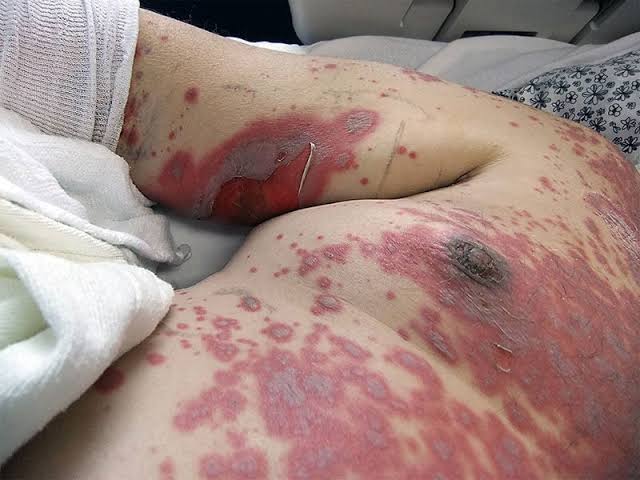
Pingback: Health Benefits of Amla - AcconstHost